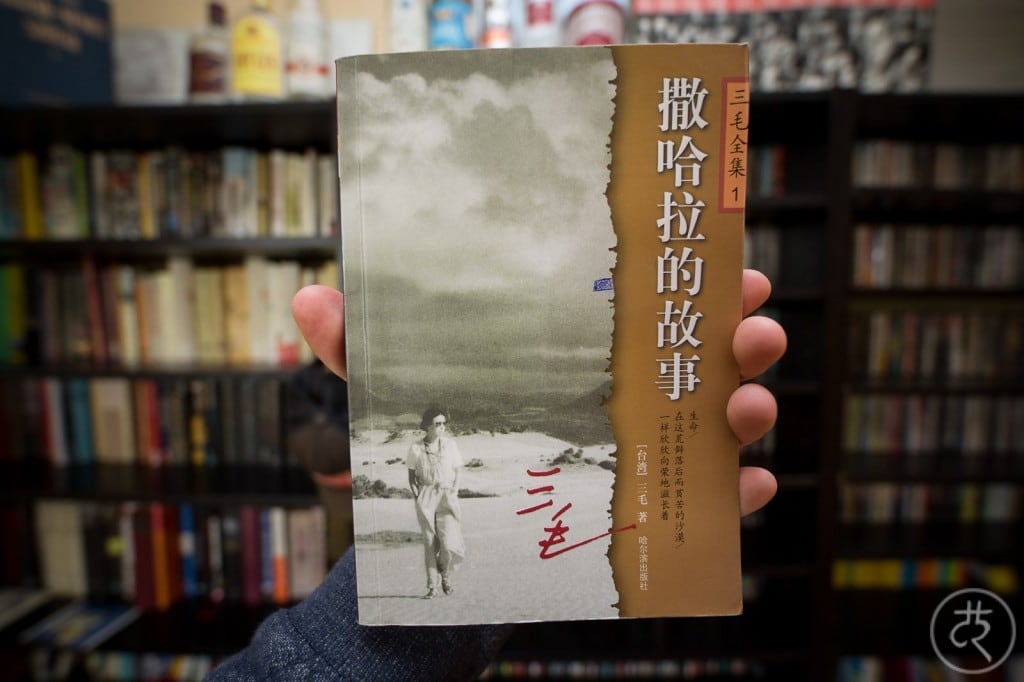the archetype
[note: I’ve been reading the Chinese original]
The story: in 1974, Chen Mao-ping (陳懋平) a young woman from Taiwan who has adopted the pen-name Sanmao (三毛) and the English name Echo, spends some time in the Western Sahara. She lives there with her Spanish husband, whom she calls José. This book is about her day-to-day adventures among the local population, and more than that, it is about the romantic relationship with her husband.
It doesn’t have one continuous storyline, but it’s made up of a number of loosely connected episodes that read like short stories or magazine articles.
self-confidence
The book is a relatively easy read. Sanmao doesn’t go into too much detail about the things that she sees. Instead keeps her writing fast and simple, trying to deliver punchlines. And she’s good at it. There is an breathtaking episode where she gets into a car chase in the desert, and then there are other stories that are more mellow and contemplative.
Overall, we get to know Sanmao as a modern independent woman who enjoys her adventurous lifestyle and keeps a humorous outlook on things. She seems rather dominant in her relationship with José, and she likes to gently make fun of him.
female/Chinese emancipation
This book came out in Taiwan, Hong Kong, and subsequently in Mainland China at the end of the 1970s, when things were in the process of opening up. It was an instant best-seller, and it has continued to inspire readers ever since. Mostly female readers, that is.
There is something about Sanmao, brave and stubborn, that must have been extremely appealing to young women from Greater China, especially at the time. She showed what an emancipated woman could do, that she could travel, have a romantic lifestyle, and be relatively free.
the condescension
Reading it today, I found some of Sanmao’s depictions of the local population rather condescending and superficial. They basically oscillated between being beautiful and savage. In this way, the book as a travelogue wasn’t all that interesting.
On a meta-level, though, I found it almost archetypical. Generations of young women from Greater China, with long hair and free flowing dresses, wielding cameras and notepads, have found inspiration in the literary persona of Sanmao.
Sanmao – fake?
There have been allegations that the adventurous lifestyle depicted by Sanmao was in fact an exaggeration. In other words: she really wasn’t all that brave, and her relationship really wasn’t all that romantic. I’m not sure if this can be proven either way, but I don’t think it’s important.
The story is over, and it isn’t. José died in an accident a few years after the publication of this book, and Sanmao eventually committed suicide in 1991.
But she has continued to inspire millions ever since.
who might want to read this
Sanmao’s feat of living in the Western Sahara at the time is okay. She tells her story very well, and her writing style is great. Her insights and observations would have been better with a bit less condescension.
If you’re interested in reading about the Western Sahara, or if you want to learn about a writer who has been enormously inspiring in Greater China, then give this one a chance.
Also read: Yu Ying, for a travel book from a different generation.

